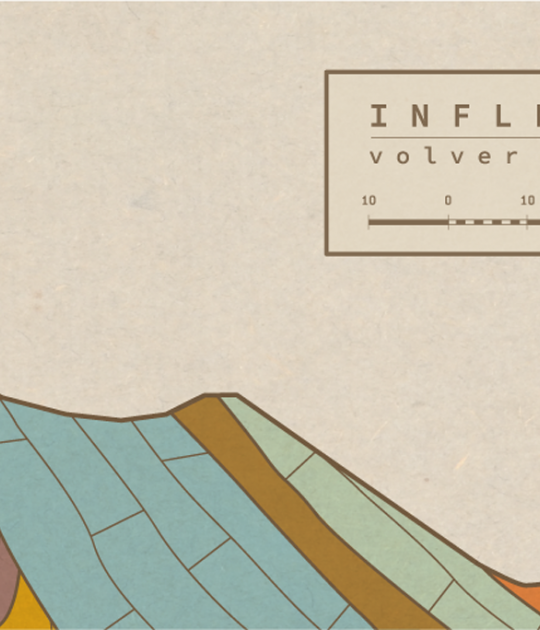Are there too many manifestos? Are there still manifestos itself? If yes, who cares about them? That if nowadays there are no powerful manifestos. That if they are rather a kind of collage. That if there is not a will to transcend. That if there is a lack of commitment... There are more questions than answers. The debate however doesn’t judge the fragmentation of the current discourse. The manifestos that transcended in the twentieth century also possessed a fragmented discourse. But do we need to reach a consensual manifesto? It was the question of the introductory lecture. Before answering it is important to differentiate the content from the format as Nacho Martin said in the debate. Beatriz Colomina already anticipated it in the preface of the spanish edition of "Privacy and Publicity" when she mentions the blogs, Youtube, Facebook, Twitter, etc.. "Can we expect the architecture won’t be affected?” Definitely don’t. It is important not to separate the manifesto from the political and social reality. The lesson is clear in German or Russian idealisms, or in the Situationist International, commented Milla Hernández.
The stage of the round table had as its background a glass screen that let the audience perceive the market movement. Rather than distracting, it gave an air of ambiguity between inside and outside. The place was a perfect setting for a discussion without absolute truths. However, it has been agreed that manifesto or not manifesto, in its several forms, plurality, inclusiveness and interdisciplinarity are required. Perhaps it is not a coincidence the scenario of the meeting, the neighborhood in which it is located, or the many posters of naked footballers and fans along the room. Those who remember "Sexuality and Space" or the recent exhibition of "Playboy architecture 1953-1979" will tend to think that in fact it is not a coincidence.
We are living new paradigms, said Andrés Perea, such as sustainability: we cannot conceive a project without it. Then he made a cross-examination: "'how much does your building weigh, Mr. Foster?' could be a manifesto itself? Or should rather be a manifesto 'how much have you left to your building ...?' ". The occidental connotation of these example reinforce the need not only of other formats, but also of other "dimensions" of thought, like the social, anthropological and philosophical ritual of the oriental cultures, as Arroyo and Perea talked.
The significance of the architects of the twentieth century was necessarily given by their manifestos; without them nor Mies, nor the Smithsons, nor Koolhaas (to include three generations), would represent the powerful influence on current creative processes, beyond its own architecture. The first reflection of the moderator is here outlined, demonstrating the importance of the establishment of a theoretical thought. What is the format? Among the references there could be the picturesque "Little magazines" featured on "Clip / Stamp / Fold" also by Colomina (and we look forward to her new publication on the manifestos of the twentieth century). However, the background of the written and built heritage of twentieth century architecture has to be a reference, but not a straitjacket or a prejudice. Let’s continue with the debate.
She is from Madrid but with a New Yorker touch. Both her presence and her lecture expose her total awareness of the importance of images and words. From the cover to the contents, the original and renovated air founded in Beatriz Colomina’s books of the critical history of the twentieth century architecture captivates its readers. How needy was the architecture theory of a feminine vision. Beatriz chose this role, though architects tend to tip more towards construction and design than to theoretical skills. The latter sentence was part of the initial reflection by the moderator of the session review "Missing Manifests", Pedro Pablo Arroyo, who opened the round table organized by the European University in “Espacio Trapézio” at San Antón Market (Chueca), where it was concluded that, ultimately, a manifesto should not even look like a manifesto. This "could even occur on the kitchen table," said Beatriz Colomina who is clear about the role of domesticity not only in architectural production, but in aspects such as the mass media or the war. The revolution of the mass media has led the manifestos to various forms.
More information
Published on:
May 1, 2013
Cite: "Manifestos and manifestos. Beatriz Colomina in Madrid" METALOCUS.
Accessed
<http://www.metalocus.es/en/news/manifestos-and-manifestos-beatriz-colomina-madrid>
ISSN 1139-6415
Loading content ...
Loading content ...
Loading content ...
Loading content ...
Loading content ...
Loading content ...
Loading content ...
Loading content ...
Loading content ...
Loading content ...
Loading content ...
Loading content ...
Loading content ...
Loading content ...
Loading content ...
Loading content ...
Loading content ...
Loading content ...
Loading content ...
Loading content ...
Loading content ...
Loading content ...
Loading content ...
Loading content ...
Loading content ...
Loading content ...
Loading content ...
Loading content ...
Loading content ...
Loading content ...
Loading content ...
Loading content ...
Loading content ...
Loading content ...
Loading content ...
Loading content ...
Loading content ...
Loading content ...
Loading content ...
Loading content ...
Loading content ...
Loading content ...
Loading content ...
Loading content ...
Loading content ...
Loading content ...
Loading content ...
Loading content ...
Loading content ...
Loading content ...
Loading content ...
Loading content ...
Loading content ...
Loading content ...


























